Retro: Do You Have the Master Balls To Be a ‘Pokémon Master Trainer’?
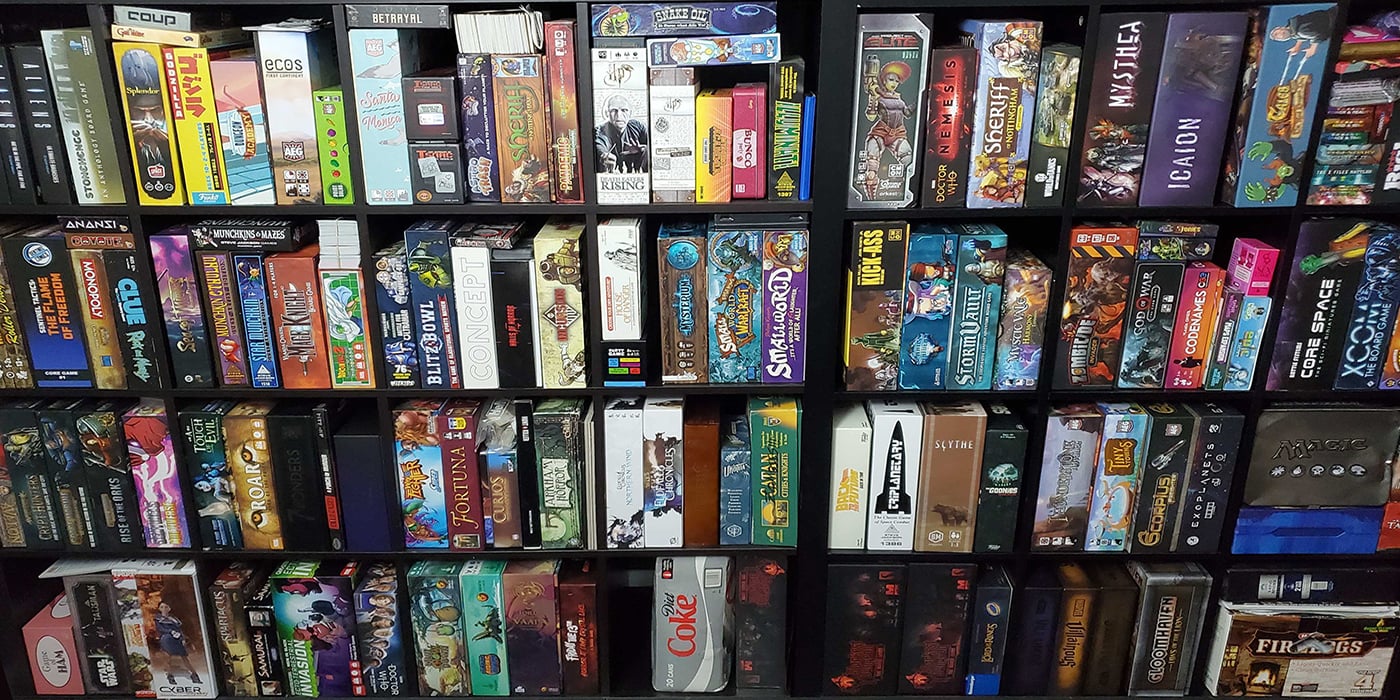
We all want to be the very best, like no one ever was. But maybe the Pokémon Master Trainer board game will be our real test.
It’s hard to imagine a world without Pokémon. Maybe not so much nowadays but in the late 90’s Pokémon was one of the biggest things in the world – led by Ash Ketchum and Pikachu. And with things like Pokémon GO keeping the trend alive. In 1999, to no one’s surprise, in the midst of the first season of the show in America Hasbro released the Pokémon Master Trainer board game.
What is this game? How does it play? Is it any good? That’s what we’re about to find out.
Let’s get started.
Setup and Gameplay
The game board shows the Kanto Region with the most obvious feature being the multitude of colored empty circular slots scattered about.
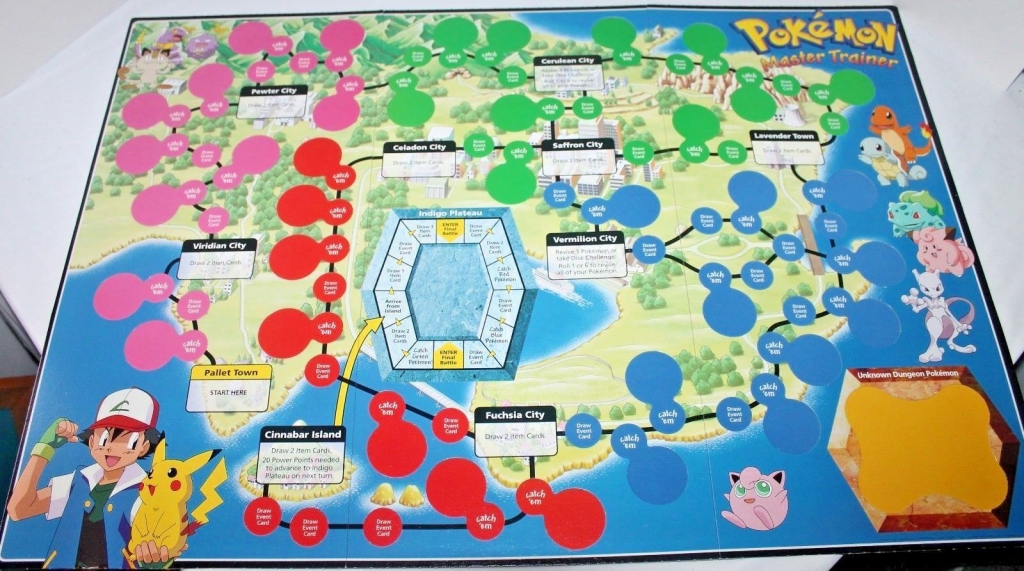
Each of these “Catch ’em” slots holds a Pokémon token, which is placed face down within the token’s color.
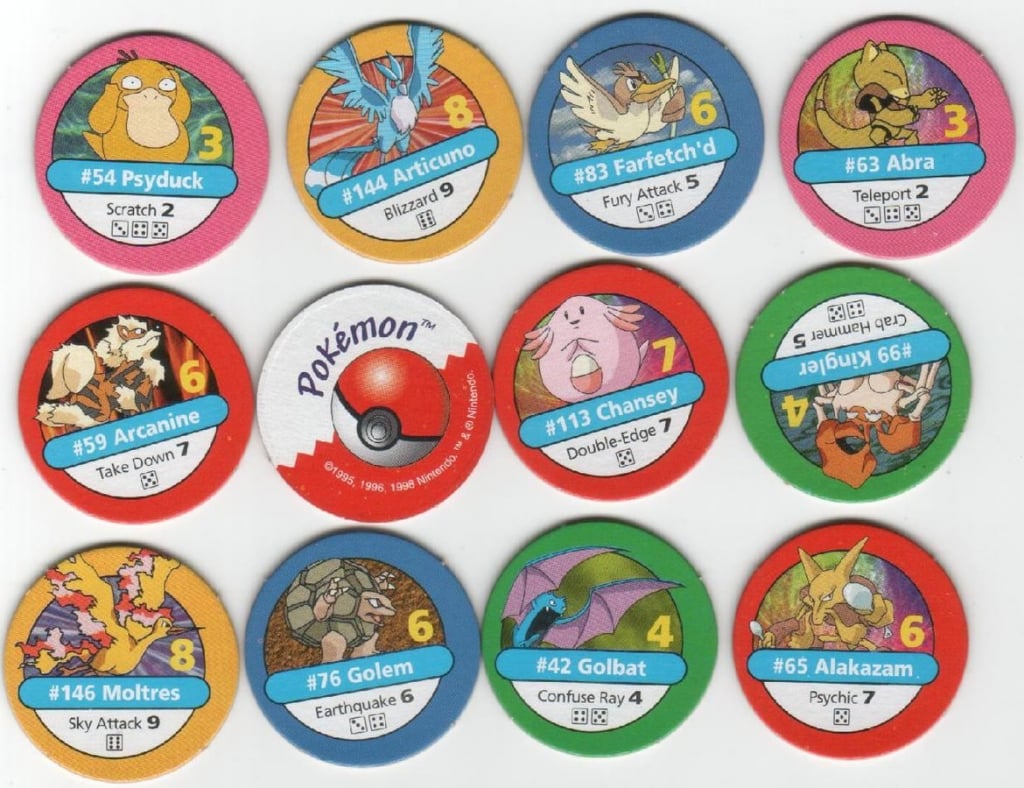 The Pokémon chips also function as collectible Pogs! Yay 90’s!
The Pokémon chips also function as collectible Pogs! Yay 90’s!
The game begins with each player choosing a starter Pokémon, obviously. The starter Pokémon chips are placed face down so you don’t know which you’re picking until after you’ve picked it.
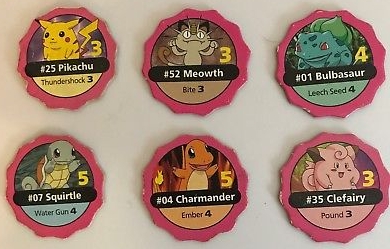 Meowth and Clefairy got upgraded to Starter Status, due to it being a 6 player game.
Meowth and Clefairy got upgraded to Starter Status, due to it being a 6 player game.
Immediately, the problems of this game start to bubble beam up to the surface. The problem with random starter Pokémon is that they aren’t all equal. Some starters are just way better than others. To see why let’s take a closer look at a Pokémon token.
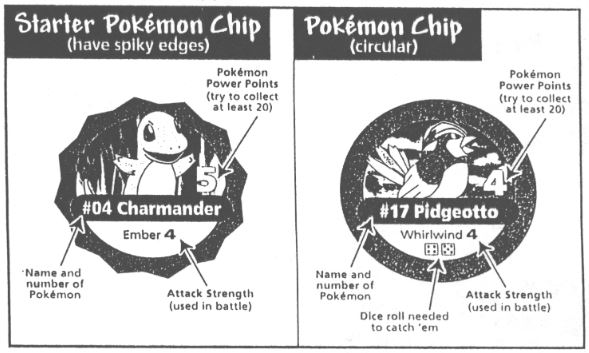 Direct from the rule book. So don’t blame me for lack of quality.
Direct from the rule book. So don’t blame me for lack of quality.
There are 3 actually relevant parts to a Pokémon token. In the bottom section is the Attack Strength and Catch dice and in the upper right is the PowerPoints. We’ll go over what these mean in more detail later. But for now, just notice that, for example, Clefairy has 3 Attack Strength and Power Points compared to Squirtle’s 4 Strength and 5 Power. There is no benefit to having lower Strength and Power.
Squirtle is just better than Clefairy in every way.
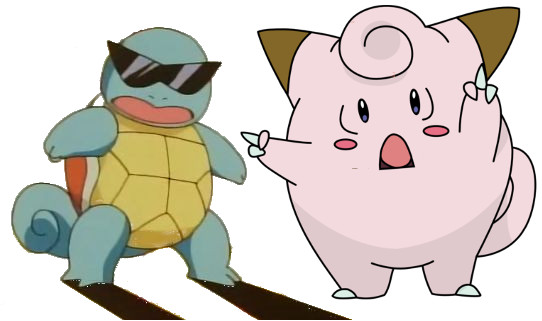 Obviously…
Obviously…
Despite the fact that some players will just start at a disadvantage, game setup continues with each player now picking their game piece or “mover” as the game calls them.
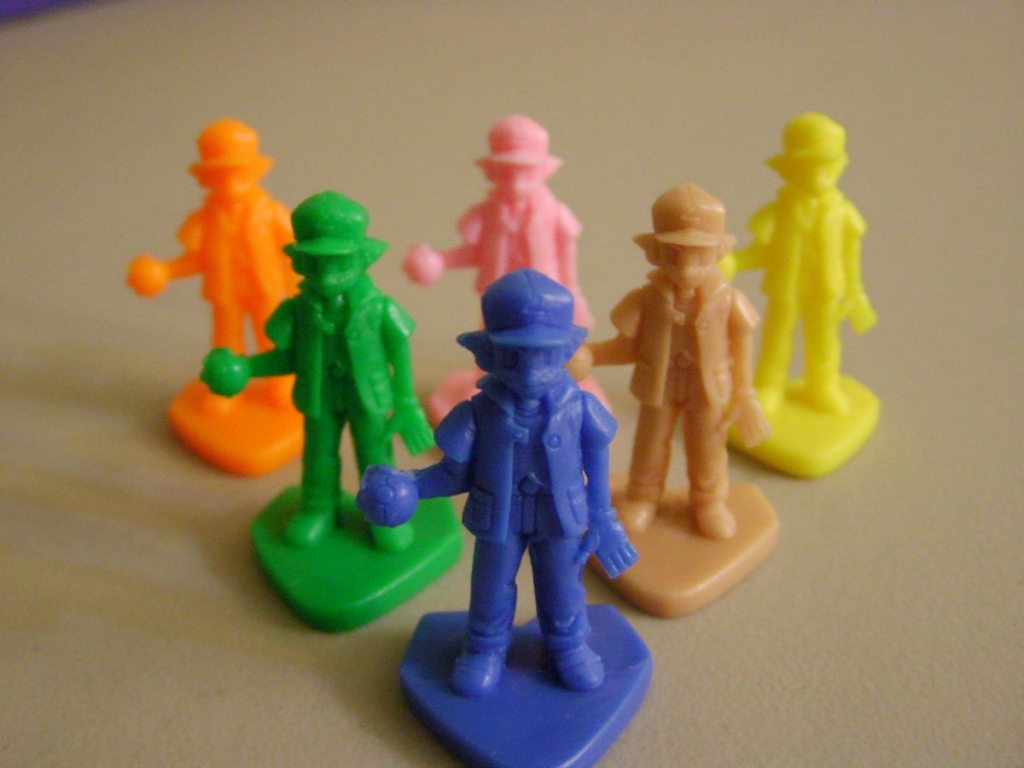 It looks like Ash has gone the way of Officer Jenny and Nurse Joy and joined up with his 5 twin brothers to take on this adventure.
It looks like Ash has gone the way of Officer Jenny and Nurse Joy and joined up with his 5 twin brothers to take on this adventure.
Each player puts their mover at Pallet Town and the game begins. Each player rolls the die to determine how far they move.
Landing on a Catch ’em space allows the player to attempt to catch that Pokémon. Other spaces let you draw Event cards. Landing in cities lets you restore your knocked-out Pokémon or draw Item cards.
If an Ash ever passes another Ash, the players can either trade or battle.
Pokémon Battle
Battling comes down to 4 things: the Pokémon’s Attack Strength, a dice roll, any Attack Bonus Item cards the players might have and the Evolution bonus.
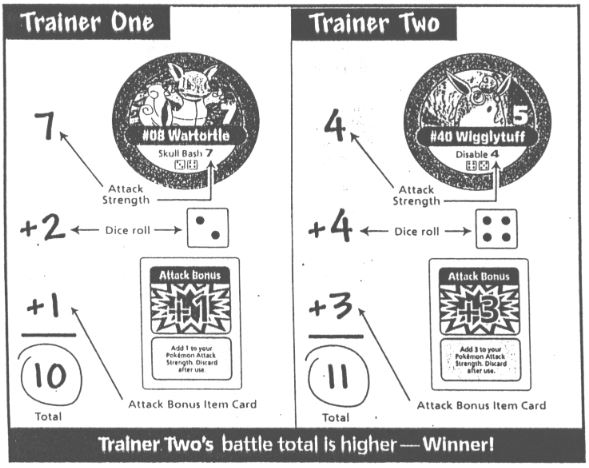
Players can add up to 2 Attack Bonus cards (which range from +1 to +5), then add up the results to determine the winner.
The losing Pokémon is knocked out and can’t fight and is counted as having 0 Power Points (we’ll get to that later).
Evolution Bonus is a bonus a player gets to battle if they have the Evolution set. If you have both Pokémon in a 2 Pokémon Evolution set, the evolved form gets a +3 bonus. If you have all 3 Pokémon of a 3 Pokémon set, the most evolved gets a +5 bonus.
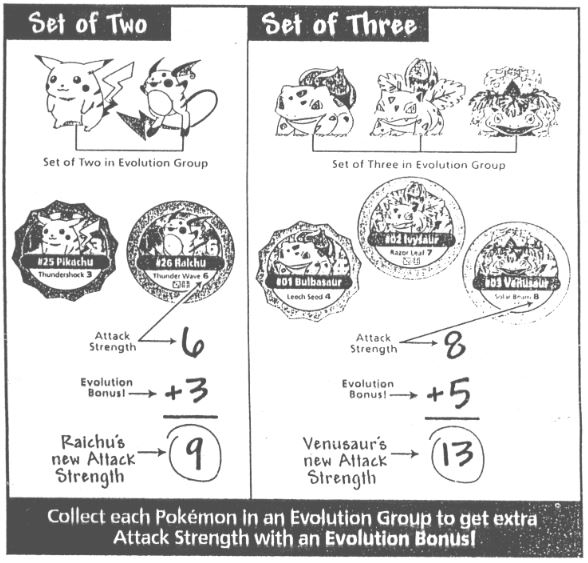
This further pushes why the starter Pokémon can be such a huge disadvantage. Clefairy and Meowth both only have a 2 Pokémon set. They simply can’t be as strong as a Blastoise. Which, to be fair, makes sense. But it’s still bad game design in this context!
Catching Pokémon
While moving, if a player lands on a route space with a Pokémon token, they reveal the token and can attempt to catch the Pokémon in that space.
Each Pokémon token has a dice symbol at the bottom of the token. This shows what the player must roll in order to catch that Pokémon. Simple enough.
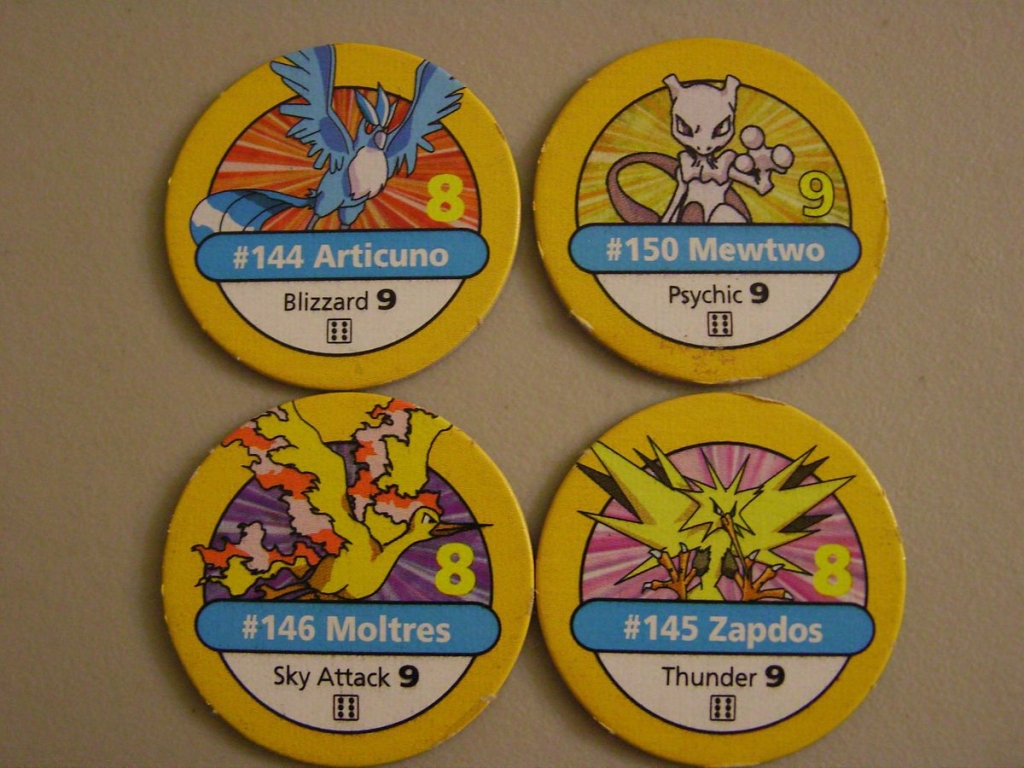 Most Pokémon have 2 or 3 numbers for being caught. These ‘mons fancy tho.
Most Pokémon have 2 or 3 numbers for being caught. These ‘mons fancy tho.
To make the task easier, players can use Pokéball cards they may have acquired. Great Balls, Ultra Balls, and Master Balls let players add anywhere from 1 to 4 to their catch roll.
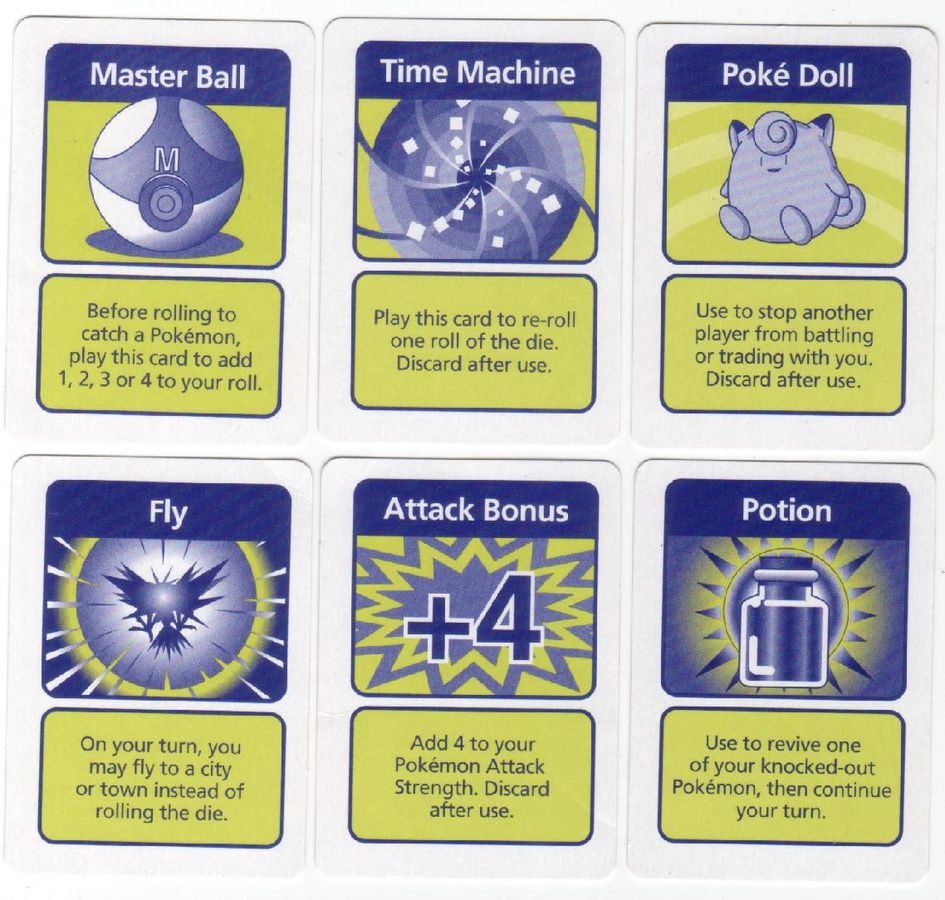
While we’re on the topic, let’s go over the issues the other items and the event cards bring to the game.
Items and Events
In addition to the Items cards above, the game has Event cards, which are basically the same thing. You can have a hand of 7 cards and both types of card allow the player to do various effects. Some are straightforward, Pokémon Center cards revive a knocked-out Pokémon, Let’s Fight! forces a Pokémon battle. But there’s one Event card worth taking a closer look at.
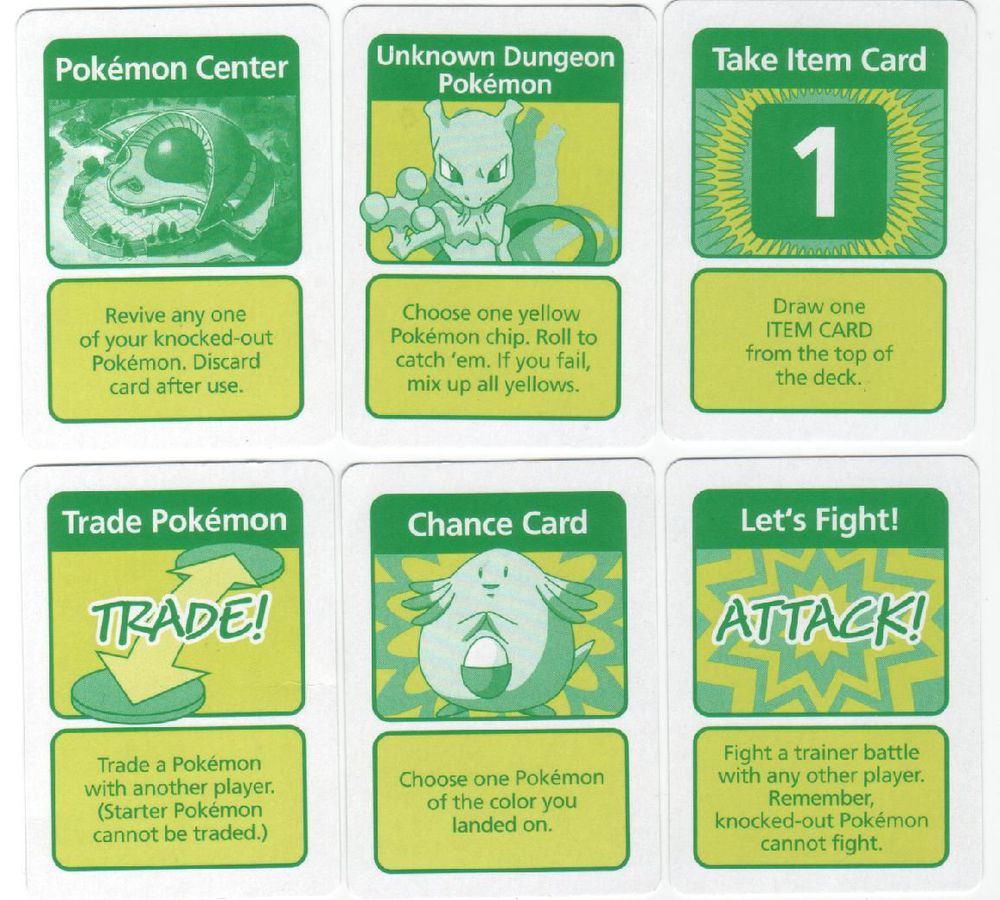
The Trade Pokémon card states “Trade a Pokémon with another player.” Seems innocuous enough. However, the game rules state the trade must be accepted by the other player.
You got a Magikarp and your opponent has a MewTwo? Not anymore! Unless they have a Poké Doll item card to stop you, the trade goes through unimpeded.
Another important Item card is the Time Machine, which lets you force a reroll on any dice roll, yours or your opponent’s. This again seems fine on the surface, but we’ll come back to why this is just a problem in just a minute.
Indigo Plateau and the Pokémon Masters
You’ve finally reached Cinnabar Island and ready to head to the Indigo Plateau to battle the Pokémon Masters! This is where PowerPoints come into play. To advance to the Indigo Plateau, you need 20 Power Points. Considering which Pokémon gives you about 5 Power, this isn’t too difficult. But remember Pokémon have 0 Power while knocked out.
Once on the Indigo Plateau, players roll and move clockwise around and around in a circle until they land on one of the two Enter Final Battlespaces.
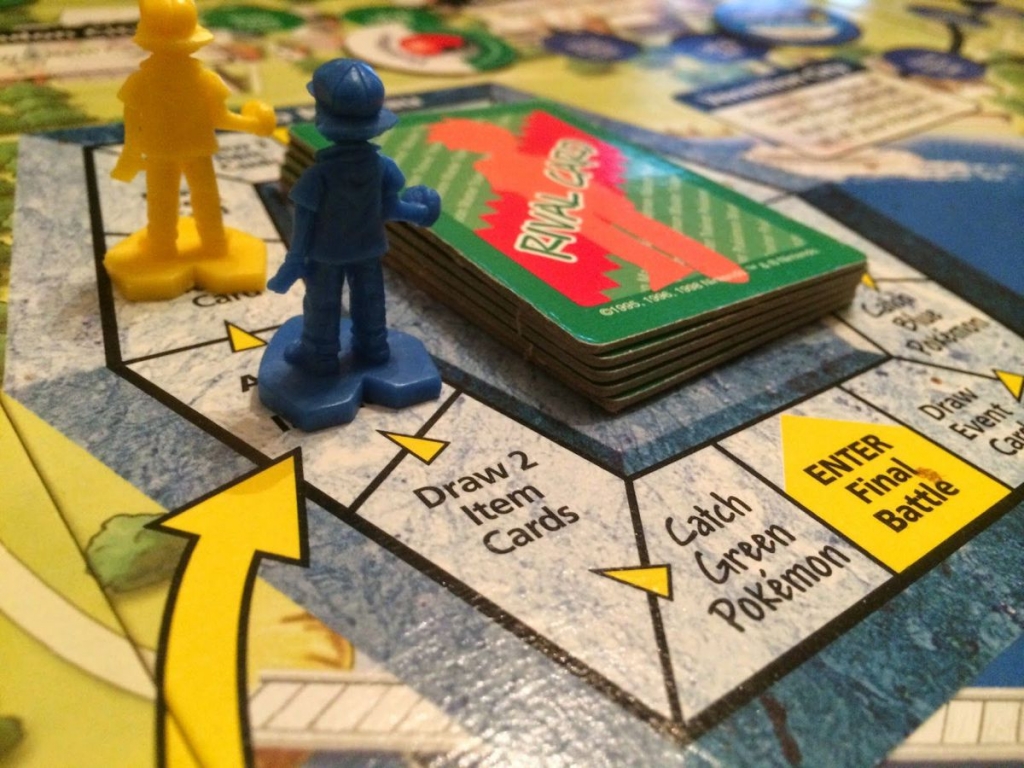
Another problem arises in that you have to land exactly on the Final Battlespace. So you’re at the whim of the dice to even get a chance to attempt to enter the battle!
Moreover, suppose you do get just the right dice roll you needed. Remember the Time Machine Item card from before? Any player can force you to reroll it, stalling you even further. It’s annoying, creates unnecessary complications and more than anything else it’s just frustrating… Just like most time travel.
But let’s say you get through all that and finally enter the Final Battle. You win this battle, you become the new Pokémon Master and win the game! You draw from the deck of Pokémon Master cards to determine your opponent.
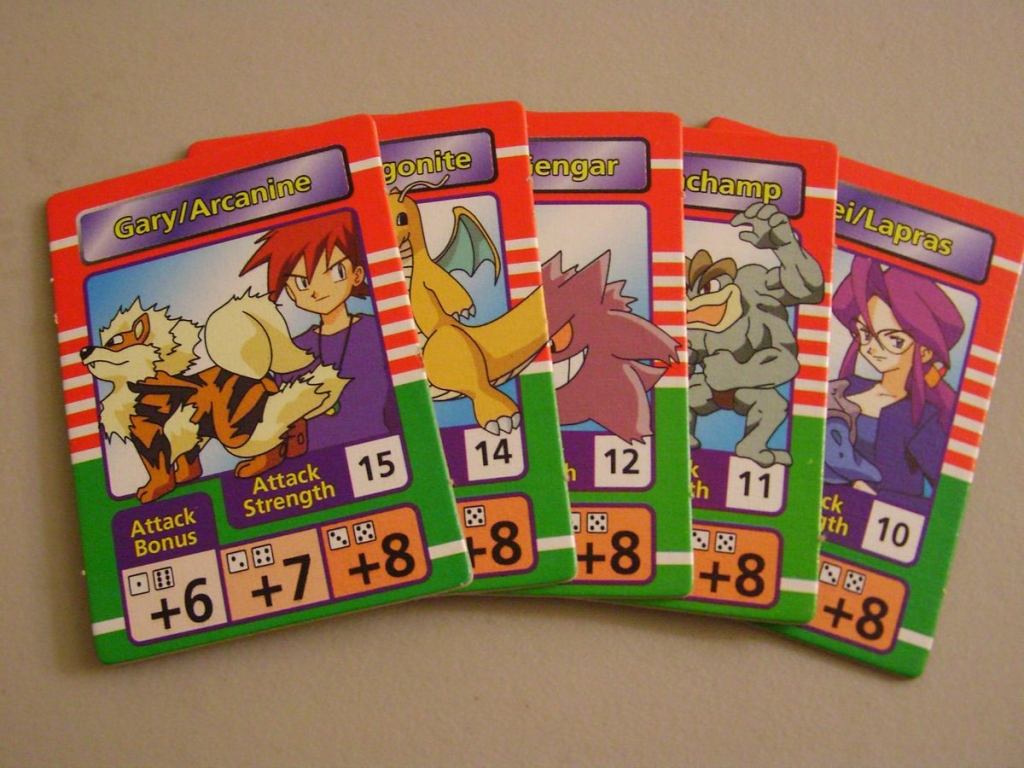
This battle works similar to the previous battles, but with added difficulty. The Pokémon Master rolls a die as before and adds their Attack Strength. However, in lieu of Attack Bonus cards, the Master gets a bonus based off of the roll itself. If Gary rolls a 2 or a 4, he adds an additional +7.
So this gives Gary a minimum Strength of 22 (15 + Roll of 1 + Bonus of 6). Compare that to MewTwo, the strongest Pokémon in the game with an Attack Strength of 9. Supposing you rolled a 6, you would still need +7 Attack Bonus to even tie with Gary! And that’s the best-case scenario.
When you lose, your Pokémon is knocked out and YOU RETURN TO CINNABAR ISLAND AND HAVE TO DO THE WHOLE PLATEAU THING ALL OVER AGAIN!
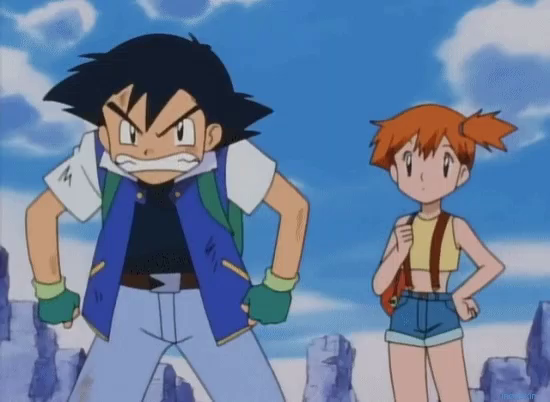
Final Thoughts
This game is incredibly tedious with so many problems that just pile up on top of each other. So much of this game is waiting and waiting for just the right dice rolls then hoping you don’t go up against Gary in the Final Battle.
The core concept is very cool and has potential but the actual mechanics are bogged down with luck of the roll and all too powerful take-that mechanics.
Sure, this game could totally be a great trip down Nostalgia Lane, but there are so many better games to do that with.
What was your favorite Gen 1 Pokémon? I was always a fan of Kadabra and Haunter.




